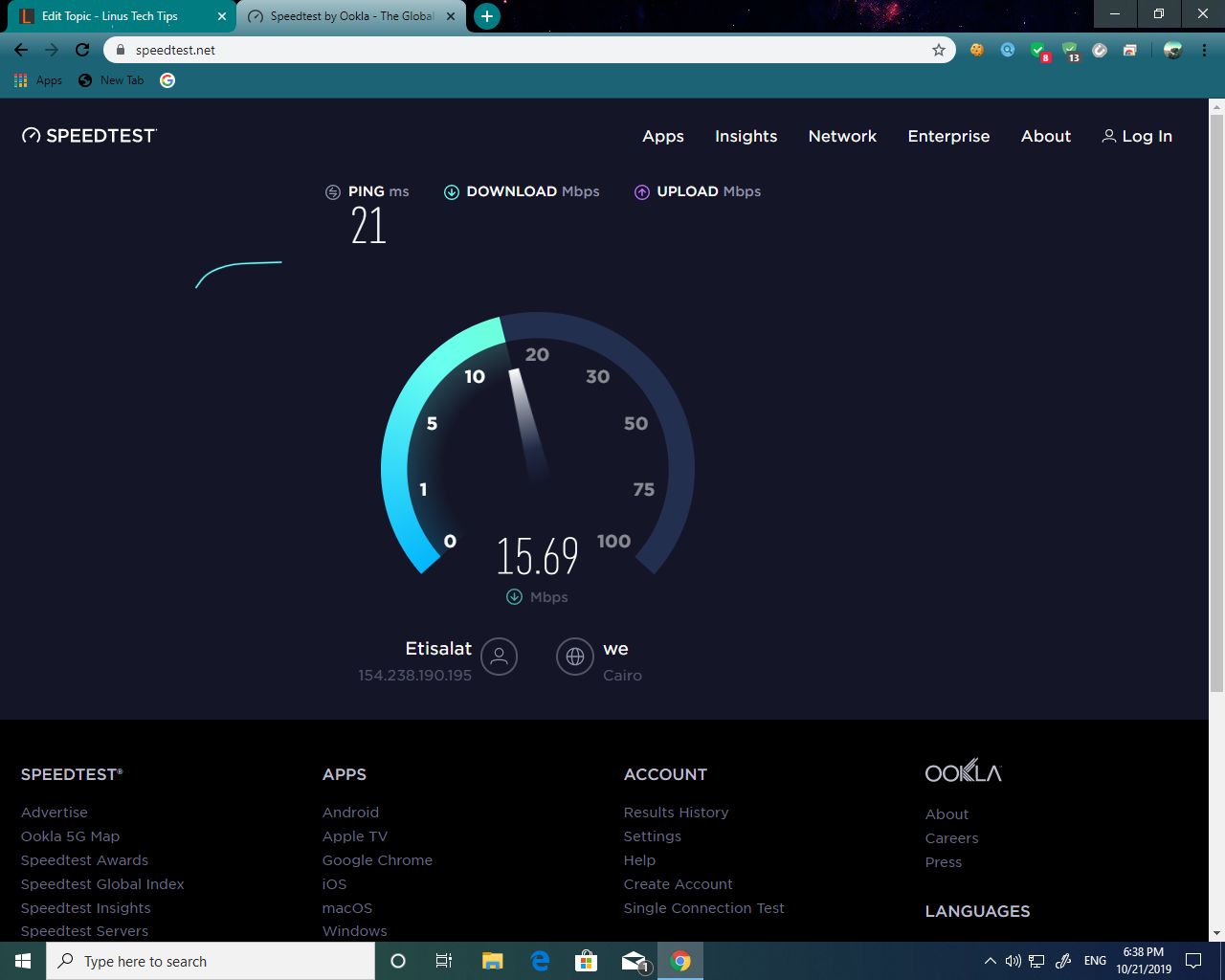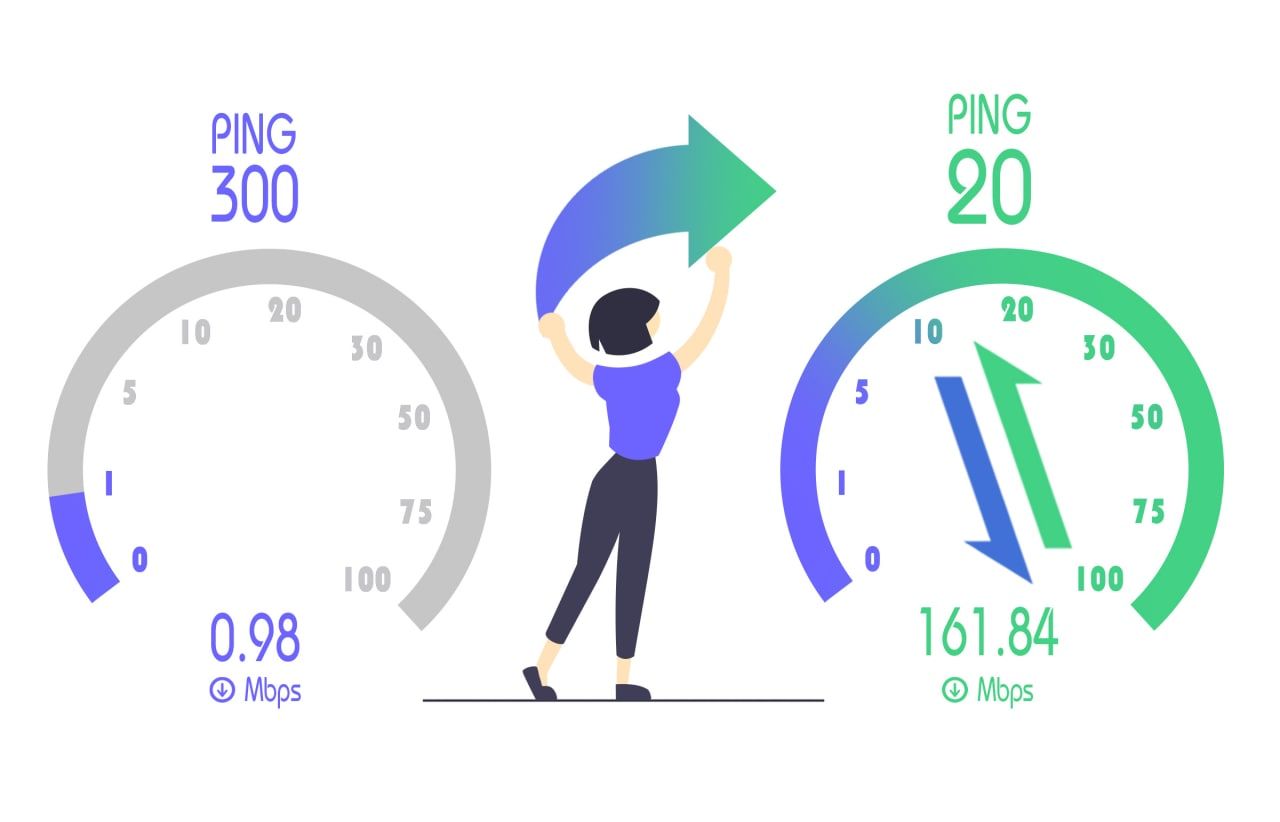Introduction
Playing online games has become a favorite pastime for many people, offering a thrilling and immersive gaming experience. However, the success of online gaming heavily depends on a stable and fast internet connection. One crucial factor that determines the quality of your online gaming experience is the ping.
Ping refers to the time it takes for data to travel from your device to the game server and back. It is measured in milliseconds (ms), and a lower ping indicates a faster and more responsive connection. When playing online games, you want your actions to be registered instantly, and any delay caused by high ping can significantly affect your gameplay.
In this article, we will explore what ping is and why it is crucial for online gaming. We will also discuss the ideal ping for a smooth gaming experience, factors that affect your ping, how to check your ping, and ways to improve it. Additionally, we will debunk some common misconceptions surrounding ping and its impact on gaming.
So, whether you are a seasoned gamer or just starting, understanding the importance of ping and how to optimize it can elevate your gaming experience to the next level. Let’s dive in and discover everything you need to know about ping and online gaming!
What is ping and why is it important?
Ping is a measure of the time it takes for data packets to travel from your device to the game server and back. It represents the responsiveness or delay of your internet connection. A lower ping indicates a faster connection, while a higher ping implies slower response times.
In online gaming, every millisecond matters. A high ping can lead to noticeable delays between your actions and the game’s response. For fast-paced games like first-person shooters or competitive multiplayer games, even a slight delay can give your opponents an advantage and hinder your performance.
A low ping is crucial for several reasons. First, it ensures that your actions are registered and executed promptly. Whether you’re shooting, moving, or interacting with the game environment, a low ping ensures that your inputs are processed quickly, maintaining a smooth and seamless gaming experience.
Secondly, a low ping reduces the possibility of lag or latency. Lag occurs when there is a significant delay between your actions and the server’s response. High ping can result in lag spikes, making it difficult to play and adversely affecting your gameplay.
Furthermore, a low ping enhances the overall gaming experience. It allows for real-time communication with other players, enabling smooth coordination and collaboration in multiplayer games. Whether you’re teaming up with friends or engaging in intense battles, a low ping minimizes communication delays and ensures seamless gameplay.
In competitive gaming, where split-second decisions and precision are crucial, a low ping can be the difference between victory and defeat. It provides a level playing field for all players, ensuring fair gameplay and a more enjoyable gaming experience.
To sum up, ping is an essential factor in online gaming. It measures the responsiveness of your internet connection and plays a vital role in ensuring smooth gameplay, minimizing delays, reducing lag, and facilitating real-time communication with other players. Understanding the significance of ping will help you optimize your gaming experience and stay competitive in the online gaming world.
The ideal ping for online gaming
When it comes to online gaming, having a low ping is the goal. While there isn’t a specific number that qualifies as the “ideal” ping for all games, generally, a ping below 50ms is considered excellent, and anything below 100ms is still acceptable for most players.
A low ping is crucial for a smooth gaming experience, as it ensures minimal delays between your actions and the server’s response. With a low ping, you can react quickly, have precise control over your character, and enjoy a seamless gaming experience.
However, the ideal ping may vary depending on the type of game you’re playing. For fast-paced, competitive games like first-person shooters or battle royales, where split-second decisions and precise aiming are crucial, having a ping below 30ms or even lower can give you a significant advantage over opponents with higher ping.
On the other hand, for slower-paced games like strategy or role-playing games, where quick reactions are not as critical, a slightly higher ping may not impact gameplay significantly. In these types of games, a ping below 100ms is generally sufficient for an enjoyable gaming experience.
It’s important to note that while lower ping is desirable, achieving the absolute lowest ping possible may not always be practical due to factors beyond your control, such as server distance and network congestion. In some cases, playing on a server geographically closer to your location can help reduce ping, but this may not always be an option depending on the game and available servers.
Additionally, some games may have built-in ping compensation mechanisms to ensure fair gameplay for players with higher ping. These mechanisms aim to minimize the advantages of low ping, creating a more level playing field for all players.
Ultimately, the ideal ping for online gaming depends on the specific game and your personal preference. It’s essential to find a balance where you have a low enough ping to enjoy a smooth gaming experience while also considering factors beyond your control.
In the next section, we will explore the various factors that can affect your ping and how you can check and improve your ping for online gaming.
Factors that affect your ping
Several factors can influence your ping while playing online games. Understanding these factors can help you identify potential issues and take steps to improve your ping. Here are some of the key factors that can affect your ping:
1. Distance to the game server: The physical distance between your location and the game server can have a significant impact on your ping. Generally, the closer you are to the server, the lower your ping will be. If the game server is located far away, your data packets will have to travel a longer distance, resulting in higher latency and increased ping.
2. Internet connection type: The type of internet connection you have can affect your ping. Broadband connections, such as cable or fiber optic, generally offer lower ping compared to slower connections like DSL or satellite. Additionally, a stable and reliable connection is important for maintaining a consistent and low ping.
3. Network congestion: The amount of traffic on your network or the game server’s network can affect your ping. If there are many users simultaneously accessing the internet or playing the same game on the same server, it can lead to congestion and higher ping. Playing during off-peak hours or opting for less crowded servers can help reduce ping caused by network congestion.
4. Hardware and software configurations: The performance of your hardware, such as your computer or gaming console, can impact your ping. Outdated or underpowered hardware may struggle to handle the demands of online gaming, resulting in higher ping. Similarly, outdated or improperly configured network drivers or firewall settings can also affect your ping.
5. Background processes and downloads: Running other applications or downloads in the background while playing online games can consume bandwidth and increase your ping. Make sure to close unnecessary applications and pause any ongoing downloads to reduce ping and optimize your gaming experience.
6. ISP throttling: Some internet service providers (ISPs) may prioritize certain types of internet traffic, leading to higher ping for online gaming. This practice, known as throttling, can negatively impact your gaming experience. If you suspect that your ISP is throttling your gaming connection, consider contacting them for clarification or exploring alternative ISPs.
By considering these factors and taking appropriate measures, such as choosing servers strategically, optimizing your hardware and software configurations, and minimizing network congestion, you can improve your ping and enjoy a smoother and more responsive online gaming experience.
Next, we will discuss how you can check your ping and monitor its performance.
How to check your ping
Checking your ping is essential to determine the quality of your internet connection for online gaming. Fortunately, there are several methods you can use to check your ping. Here are a few commonly used options:
1. In-game ping display: Many online games have built-in features that allow you to check your ping within the game settings. Look for an option to display your ping or latency in the game’s user interface. This can give you real-time information on your connection’s performance while you’re actively playing.
2. Online ping test websites: Numerous websites offer online ping tests that allow you to measure your ping to various servers around the world. These websites typically provide a simple interface where you can select a server location and initiate a ping test. The website will then display your ping time in milliseconds. Popular ping test websites include Speedtest.net, Pingtest.net, and Fast.com.
3. Command prompt or terminal: For more technical users, using the command prompt or terminal to check your ping can be an effective method. On Windows, open the command prompt and type “ping [server IP or domain name]” (without quotes) and hit Enter. On macOS or Linux, open the terminal and use the “ping” command in the same way. This command will initiate a ping request to the specified server, and you can observe the response times to measure your ping.
4. Network analysis tools: Advanced users can utilize network analysis tools like Wireshark or PingPlotter to gain detailed insights into their internet performance. These tools provide in-depth analysis of network traffic, packet loss, and latency, helping you identify potential issues affecting your ping.
It’s important to note that when measuring your ping, it’s recommended to perform multiple tests at different times of the day to get a more accurate representation of your connection performance. Factors like network congestion can cause variations in your ping, so conducting several tests can provide a better understanding of your average ping.
By regularly checking your ping, you can monitor your connection’s performance, identify any issues that may arise, and take appropriate measures to optimize your ping for a better online gaming experience.
Next, we will discuss various methods to improve your ping and reduce latency.
Improving your ping
Having a low ping is crucial for optimal online gaming performance. If you find that your ping is higher than desired, there are several steps you can take to improve it. Here are some effective methods to reduce ping and latency:
1. Use a wired connection: While Wi-Fi offers convenience, a wired Ethernet connection tends to provide more stable and lower latency connections. Connect your gaming device directly to your router using an Ethernet cable to minimize interference and maximize your connection speed.
2. Close bandwidth-consuming applications: Applications running in the background, such as streaming services or file-sharing programs, can consume bandwidth and increase your ping. Close or pause these applications while gaming to reduce network congestion and prioritize your gaming traffic.
3. Optimize your network settings: Ensure that your router is configured correctly for gaming. Enable Quality of Service (QoS) settings if available, which allow you to prioritize gaming traffic over other data on your network. Additionally, make sure that your router’s firmware is up to date to benefit from any performance enhancements.
4. Choose servers strategically: When playing online games, select servers that are closer to your geographic location. Connecting to servers in your region reduces the distance your data has to travel, resulting in lower ping. Many games allow you to manually choose the server you connect to or have options for region-based matchmaking.
5. Upgrade your internet plan: If you consistently experience high ping, consider upgrading your internet plan to a higher speed. A faster internet connection can help reduce latency by providing more bandwidth and a more responsive connection.
6. Optimize your computer or console: Ensure that your gaming device is running efficiently. Close unnecessary applications, update your graphics drivers, and regularly perform system maintenance tasks to reduce any performance bottlenecks that could contribute to higher ping.
7. Consider a VPN (Virtual Private Network): In some cases, using a VPN can help improve your ping by providing a more direct and optimized route between your device and the game server. However, results may vary depending on your location and the VPN service provider, so it’s advisable to research and choose a reliable VPN service specifically designed for gaming.
By implementing these measures, you can effectively reduce your ping and improve your online gaming experience. Remember that improving your ping may require trial and error, as different methods may have varying impacts depending on your specific network setup and game environment.
In the next section, we will address common misconceptions about ping in online gaming.
Common misconceptions about ping
Ping is often a topic of discussion among gamers, and there are several misconceptions surrounding its significance and impact on online gaming. Let’s debunk some of the common misconceptions about ping:
1. Ping is the only factor that affects online gaming performance: While ping plays a crucial role in online gaming, it’s not the sole determinant of performance. Other factors, such as your internet speed, hardware capabilities, and server performance, also contribute to your overall gaming experience.
2. Lower ping guarantees victory: While a lower ping can provide a smoother and more responsive gaming experience, it doesn’t guarantee victory. Skill, tactics, and teamwork also play significant roles in determining success in online games. Even with a lower ping, you still need to practice and develop your gaming skills to excel.
3. Gaming on a higher ping server is always a disadvantage: While playing on a server with higher ping might introduce some delay, it doesn’t necessarily mean you are at a disadvantage. Many games implement latency compensation mechanisms, which can balance the gameplay experience based on each player’s latency. Additionally, player skill and strategy often outweigh the minor disadvantages caused by a slightly higher ping.
4. Ping can always be controlled and improved: While there are steps you can take to improve your ping, some elements are beyond your control. Factors like server location, network infrastructure, and ISP limitations can affect your ping. It’s important to understand that achieving the lowest possible ping may not always be feasible, and focusing on optimizing other aspects of your gaming setup and skill development is equally important.
5. Ping is constant throughout the game: Ping can fluctuate during gameplay due to various factors, such as network congestion, server load, or background processes. It’s normal to experience minor variations in ping, and occasional spikes may occur. It’s important to monitor your average ping over time rather than fixating on individual fluctuations.
Understanding these misconceptions helps to set realistic expectations when it comes to ping and its impact on online gaming. While a lower ping can improve your gaming experience, it’s important to focus on overall skill development, teamwork, and game strategy to succeed and enjoy online gaming to the fullest.
In the concluding section, we will summarize the key points discussed in this article about ping and its importance in online gaming.
Conclusion
In online gaming, ping plays a vital role in determining the quality of your gaming experience. A low ping ensures a fast and responsive connection, allowing you to play games smoothly and engage with other players in real-time. While the ideal ping may vary depending on the game and personal preference, generally, a ping below 50ms is considered excellent.
Factors such as distance to the game server, internet connection type, network congestion, and hardware configurations can all impact your ping. By understanding these factors and implementing appropriate measures like using a wired connection, closing bandwidth-consuming applications, and optimizing network settings, you can lower your ping and enhance your online gaming experience.
It’s important to separate fact from fiction when it comes to ping. Lower ping doesn’t guarantee victory, and playing on a higher ping server doesn’t always result in a disadvantage. Understanding the broader aspects of online gaming, such as skill development, teamwork, and strategy, is just as crucial as having a low ping.
Regularly checking your ping using in-game features, online ping test websites, or command prompt/terminal can help you monitor your connection’s performance. By identifying potential issues and taking steps to reduce ping, you can optimize your gaming setup and enjoy a smoother and more responsive gaming experience.
In conclusion, ping is a key metric for online gaming, representing the responsiveness of your internet connection. A low ping enhances gameplay, reduces delays, and facilitates real-time communication with other players. By considering factors affecting your ping, implementing optimization techniques, and dispelling common misconceptions, you can elevate your online gaming experience and unlock your full gaming potential.

























